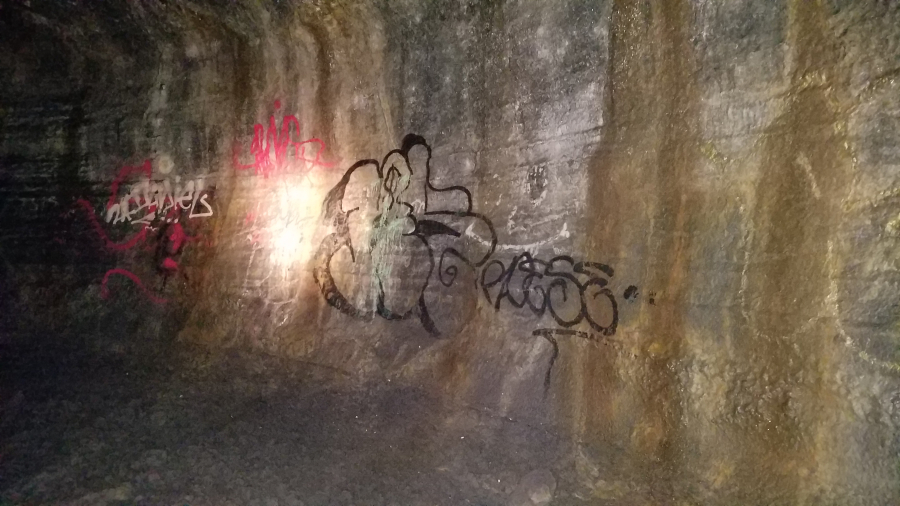Graffiti has become a growing problem inside Ape Cave at the Mount St. Helens National Volcanic Monument over the last few years. U.S. Forest Service officials say they’re working on a plan to remove it, but the cave’s sensitive environment poses complications.
At 2.5 miles long, the Ape Cave is the third-longest lava tube in North America and a top attraction for visitors coming to Southwest Washington. But hikers who have walked through it in recent years have passed by spray-painted graffiti at various locations throughout the cave. Some of the graffiti inside is at least 2 years old and sits at various levels throughout the cave.
“We did find new graffiti in there yesterday — and a pretty massive amount of it, actually,” said Chelsea Muise, recreation program manager on the monument. “We were doing a normal cave patrol and they could smell it — it was that fresh. It was done the night before.”
Muise said the agency has looked for solvents that will remove the paint without damaging the cave’s ecosystem. But finding the right solvent has proved difficult, partly because different types of paint require different cleaning products. Whatever products they do use are likely to largely stay in the cave’s ecosystem, and chemicals like mineral spirits and other graffiti-removal products are hard on the environment.




